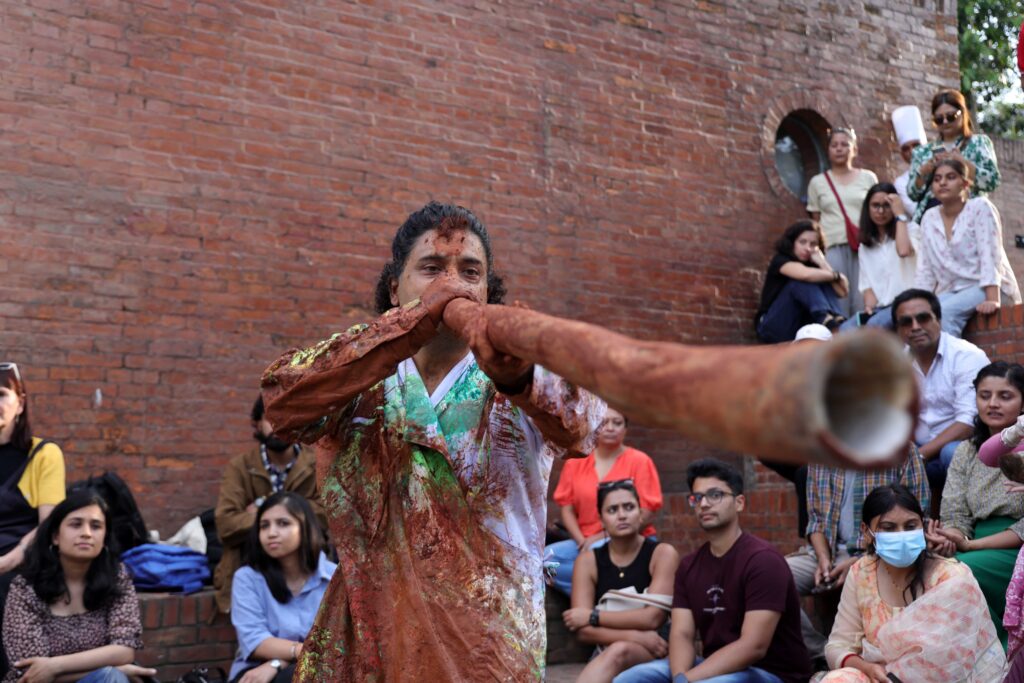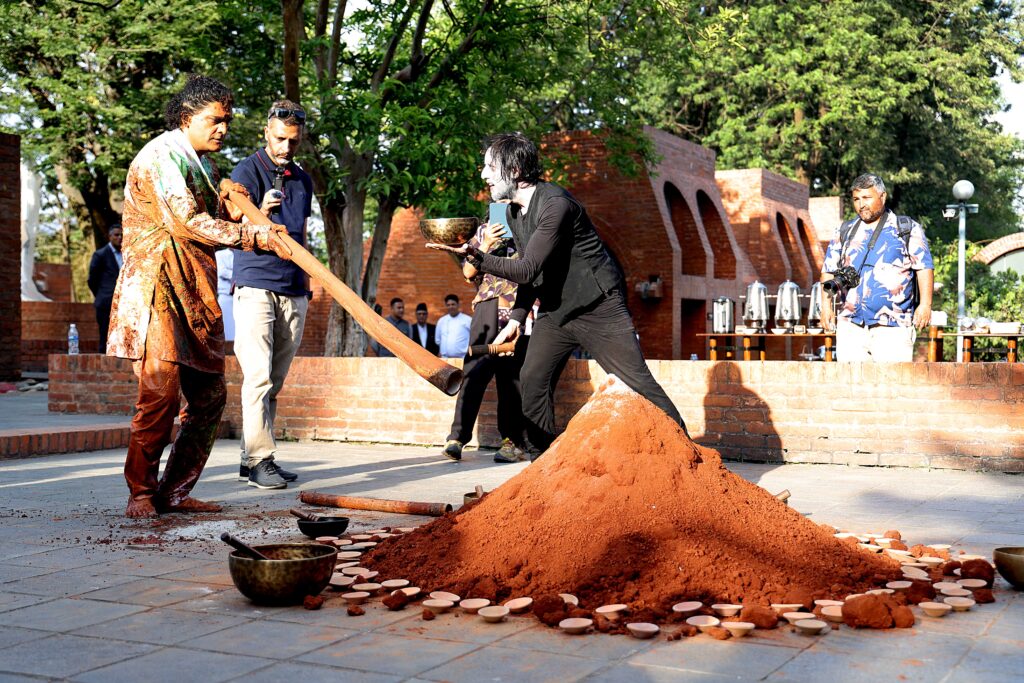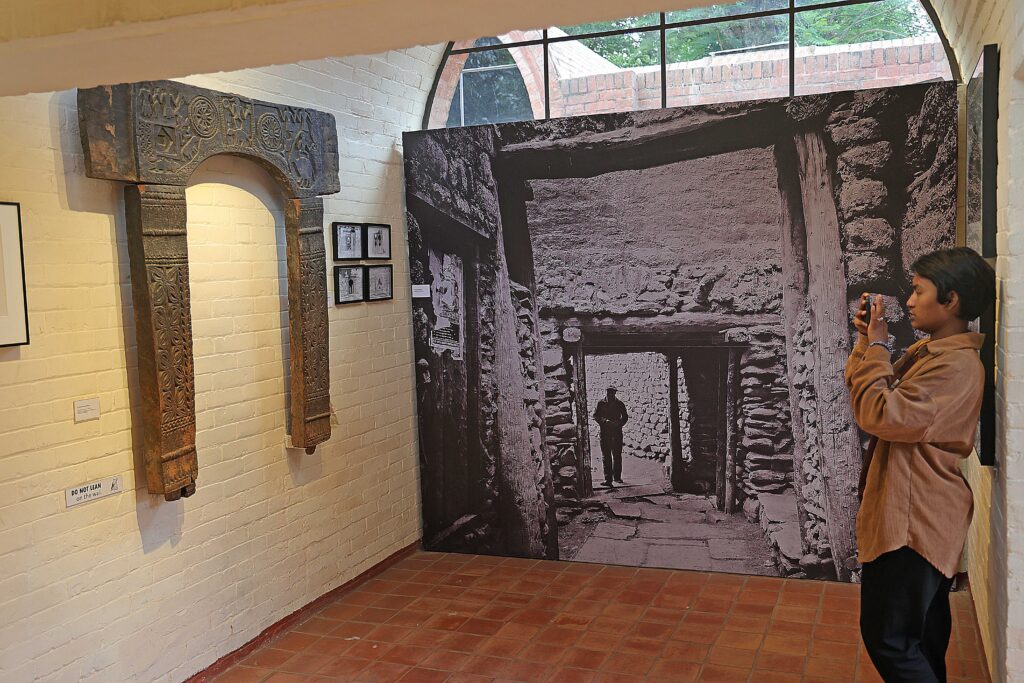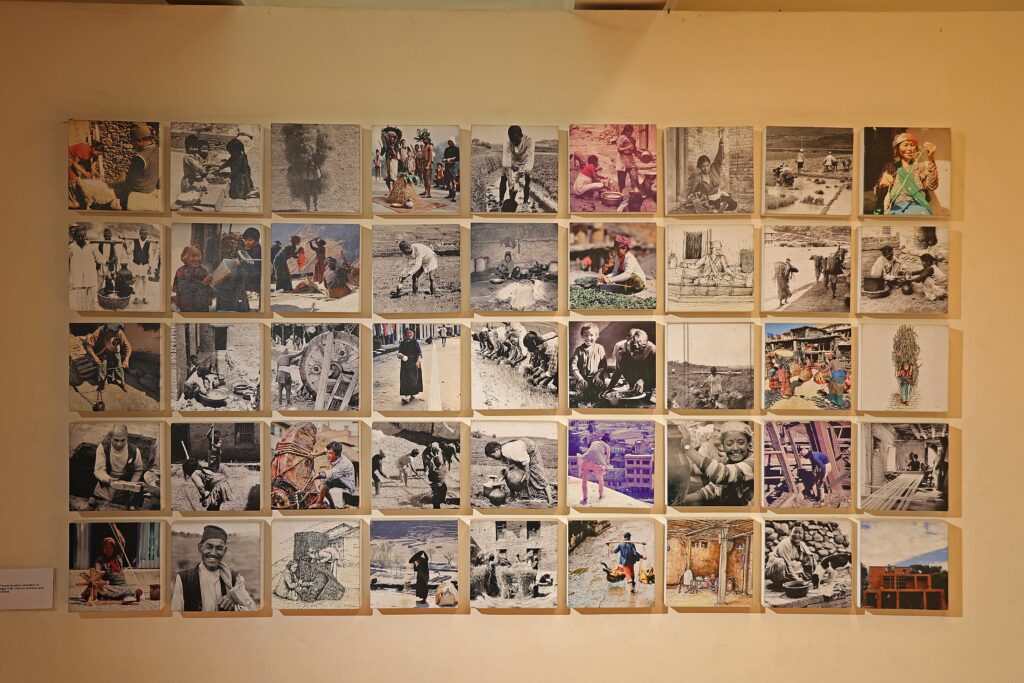

 20.7°C काठमाडौं
20.7°C काठमाडौं
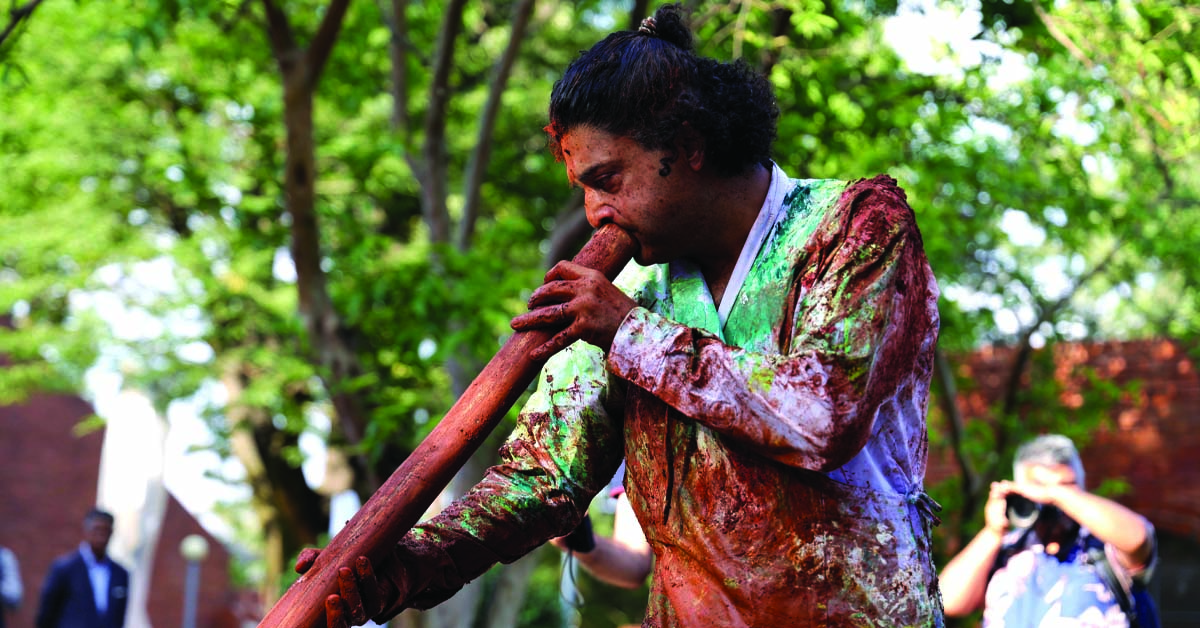
Kathmandu, 6 June 2025: Sagarmatha Next, a pioneering platform blending environmental awareness with contemporary Himalayan art, successfully unveiled its much-anticipated exhibition, “At the Tipping Point: Art and Ecology from the Rooftop of the World,” on June 5 at Taragaon Next in Kathmandu.
Supported by the Saraf Foundation and curated by renowned art historian Dr. Arshiya Lokhandwala, the exhibition marked a significant cultural moment, exploring the intersections of climate, culture, and human responsibility through powerful artistic expressions.
The exhibition brings together 12 leading artists, each presenting a unique project that engages with ecological entanglements, spiritual traditions, indigenous knowledge, and scientific insight:
• Himali Singh Soin – We are opposite like that (2018): A poetic video work filmed in the Arctic archipelago of Svalbard, reflecting on climate change, failed extraction, and colonial residue.
• Ursula Biemann – Forest Mind (2021): A collaborative video essay with the Inga community in Colombia, proposing forests as sentient, epistemic agents.
• Utsa Hazarika – Yantra/Bloom (2025): A hybrid living sculpture reimagining Delhi’s Samrat Yantra sundial with blooming jasmine vines.
• Maksud Ali Mondal – Fungal Habitat (2025): A self-sustaining living sculpture composed of clay, wood, and mushroom cultures that grow and shape the piece over time.
• Samyukta Bhandari – Echoes of Survival (2025): A multimedia installation reflecting on the silenced voices of house sparrows amidst urban noise pollution.
• Amit Machamasi – Not the Same Anymore, The Irony, and Seeds and Tools (2024): A photo triptych documenting the transformation of Bhaktapur’s agrarian landscapes due to urban sprawl.
• Salil Subedi – Earth Emergence (2025): A live, mud-body ritual performance invoking the Earth’s primal voice in a visceral, temporal act of ecological connection.
• Monica Ursina Jäeger – Liquid Time (2022): A five-channel video tracing the metamorphosis of sand from mountain rock to concrete, implicating global construction economies.
• Joana Moll – 4004 (2021): A digital video project linking microchip production to insect population collapse through haunting visual contrasts and data visualization.
• Chris Jordan – Midway: Message from the Gyre (2009–2013) and Albatross (2017): Photographic and film works capturing the tragic deaths of albatross chicks on Midway Atoll due to ocean plastic pollution.
• Saurganga Darshandhari – Yomari wo Yomha ji and Grain of Gold (2025): Sculptural installations inspired by Newar harvest rituals, exploring the ties between food, culture, and ecological balance.
• Robertina Šebjanič – Aquatocene, The Atlantic Tales, and Co_Sonic 1884 km² (2016–2024): Sound-based installations exploring underwater ecologies and the sonic dimensions of environmental degradation.
The opening drew a wide audience from Nepal’s art, environment, and academic communities and was hailed as a landmark event in the region’s cultural calendar. With the Himalayas warming at nearly twice the global average, the exhibition served as a timely and urgent call to reflect, reimagine, and reconnect with the planet in the age of climate crisis.
The exhibition will be on view for three months.
Below are some images from the venue:
